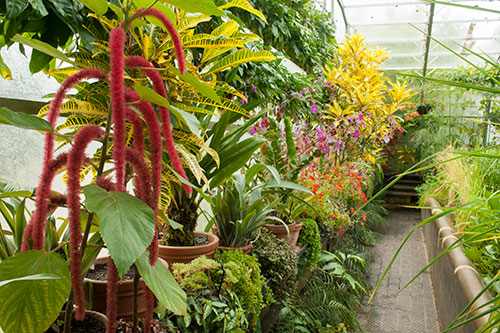Perfect places to study
Students at Oxford have access to world-class learning resources.
You can study in the Bodleian Libraries - some of the most famous, best-resourced and most awe-inspiring places to study anywhere in the world. You also have our four world-famous museums on your doorstep, filled with over 8.5 million intriguing objects. Our scientists have access to state-of-the-art laboratories and equipment leading to new discoveries with global influence and which help make our world a better place.
I stayed in Oxford over the summer and helped out some researchers in the Oxford University Museum of Natural History. I made a 3D model of a plesiosaur skull: plesiosaurs are extinct marine reptiles that often have very long necks! Actually having a hand in current research in my subject really drove me in my studies and reinforced why I love my degree so much.
Madeleine
My favourite museum in Oxford has to be the Ashmolean Museum. That’s because I study Classics, and they have a lot of ancient relics and sculptures, or replicas, that remind me why I wanted to study Classics at Oxford in the first place.
Taslima
LEGENDARY LIBRARIES
Oxford's iconic Bodleian Libraries are the largest university library system in the UK, holding over 13 million printed items on 400 km of shelving. This means that it is possible to complete your studies here without having to buy a book. The Bodleian also house treasures such as a copy of Jane Austen's unfinished novel, the largest collection of Tolkien materials in the world and the largest collection of works in Sanskrit outside Asia. Our graduates often describe the libraries as one of the greatest privileges and pleasures of studying at Oxford.

AMAZING ARTEFACTS
Oxford's famous museums can be enjoyed by everyone for free, but for many academics and students, they are also a valuable study resource. These world-class museums house treasures from the natural world, as well as amazing art and artefacts. The Ashmolean houses rare items such as a Stradivarius violin and the Arab dress of Lawrence of Arabia. The Museum of Natural History boasts gigantic dinosaur skeletons and a stuffed dodo. The Pitt Rivers Museum contains intriguing artefacts from all over the globe and the History of Science Museum shows some of the objects which have changed the world over the centuries.

STATE-OF-THE-ART LABORATORIES AND EQUIPMENT
Over the past ten years, more than £400 million has been invested in our science facilities and infrastructure, creating inspiring spaces for discussion, collaboration and cutting-edge research. These include one of the largest magnetic resonance facilities and one of the best-equipped mass spectrometry labs in the UK.

LABORATORIES WITH LEAVES
Oxford also has an arboretum and a botanic garden which together hold over 6,000 types of plant, some of which are grown nowhere else. Wytham Woods is a designated Site of Special Scientific Interest. With over 500 species of plants, a wealth of woodland habitats and over 800 species of butterflies and moths, it is one of the most researched pieces of land in the world.

Sign up to our Choosing Oxford newsletter and visit our undergraduate admissions website for all the latest information about applying to Oxford.
Please fill in our feedback form about this prospectus to be entered in a prize draw.
Our 2025 University-wide undergraduate Open Days will be held on 2 and 3 July and 19 September. Further information will be published on our website in the build up.
